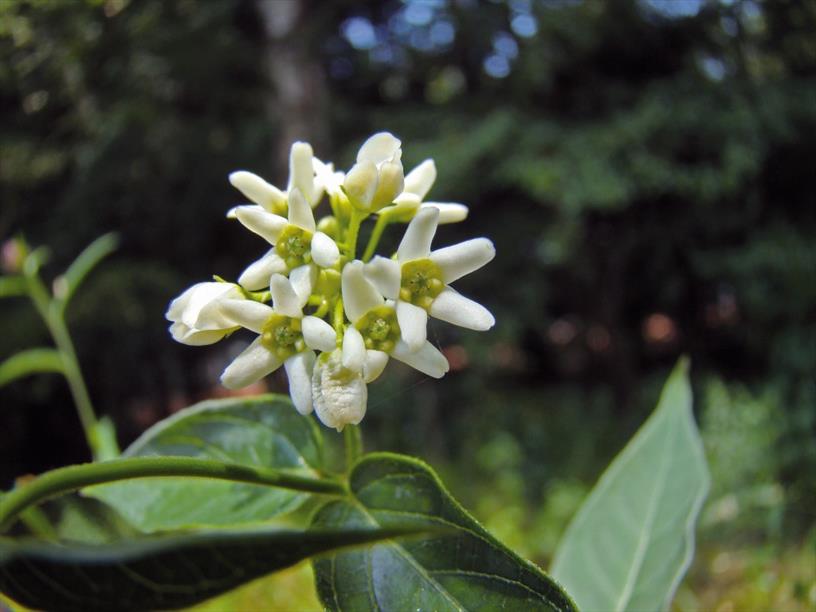(white) swallow wort
Vincetoxicum hirundinaria
Dogbane family (Apocynaceae)
Seeds with a quiff
The dogbane family is represented in the Netherlands by only three genera – apart from the well known periwinkle (Vinca), of which the lesser periwinkle can be found in the wild in the woods in Limburg, there is swallow-wort (Vincetoxicum) and the naturalised common milkweed (Asclepias syriaca). The corolla of the swallow-wort is composed of five petals and on the outside of the anthers there are appendages that grow together to form a five piece crown.
The white swallow-wort can become 30 cm to around 1 m in height and has entire margined, oval to lance-shaped leaves. In the summer it produces small, white flowers. After flowering it produces up to 6 cm long fruit called a follicle. Each seed has a quiff, a dense turf of white hair.
As its Latin name (antidote) suggests, the plant was used in the past to induce vomiting to expel poison. The black swallow-wort (that has appeared recently in the Dutch dunes) was used as an antidote to snake bites.
Read more.... »Themes
Swallow wort is used in homeopathy.
This plant is an irritant and all parts of the plant are toxic. Cases of poisoning in humans and animals that have come into contact with it are rare but serious.
As its Latin name 'vincetoxicum' (overcoming poison) indicates, the plant was used to induce vomiting to expel poison.
Details
| Description: | Herb, up to 1.20 m. |
|---|---|
| Distributions: | Central asia, north africa, and southern and central europe |
| Habitat: | In grassland, bouldered slopes, rocky slopes, forests and forest edges (on calcareous sites), clearings and on rubble. |
| Year cycle: | Perennial (trees and shrubs included) |
| Hardiness: | 5 - 14 f (hardy - cold winter) |
| Flowering period: | Mei - augustus |
| Flower color: | Yellow, green, white |
| Notes on flowers: | The flowers are greenish yellow, white or yellowish white. |
| At its best: | Mei - augustus |


